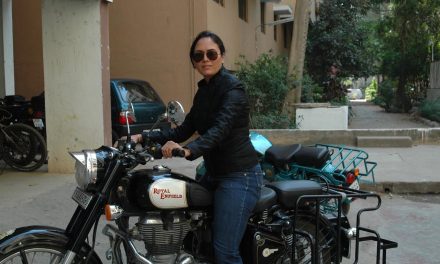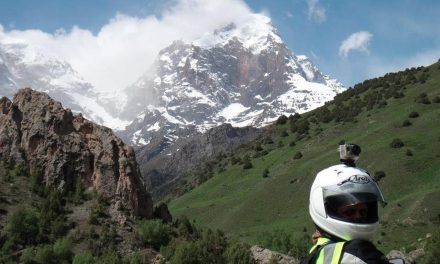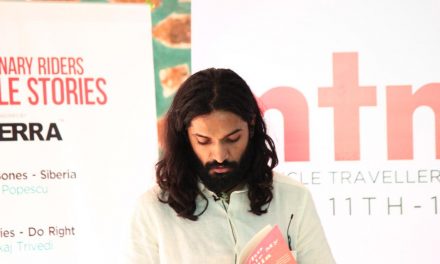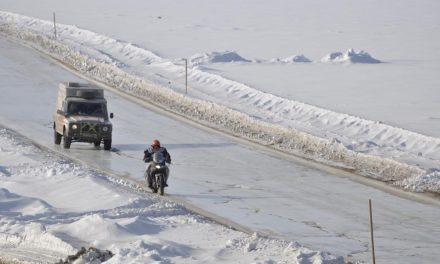Like all Air Force Stations, Saharanpur too has historical significance. This was the base that was part of IPKF operations and had at the time conducted some daring rescue operations. The one that comes to mind is an operation involving the rescue of victims stranded in cable cars in Dehradun. Saharanpur AFS had a principal purpose to provide cover to the entire range of what is now Uttarakhand. From rescuing stranded avalanche study teams to route reconnaissance and carting people deeper into strategic locations, Saharanpur AFS had its work cut out.
The call from the hills began as soon as I was posted to 30 Wing. The Air Force Adventure Foundation was preparing its agenda for adventure activities for the year. Seizing the opportunity, I quickly put in a proposal for the first ever (mixed) motorcycle expedition to Badrinath. This proposal was endorsed by the equally enthusiastic Station Commander Gp. Capt. RPS Dhillon. A pilot himself, he wanted his station officers to master the hills from the ground as much as they could from the air.

Like all Air Force Stations, Saharanpur too has historical significance. This was the base that was part of IPKF operations and had at the time conducted some daring rescue operations. The one that comes to mind is an operation involving the rescue of victims stranded in cable cars in Dehradun. Saharanpur AFS had a principal purpose to provide cover to the entire range of what is now Uttarakhand. From rescuing stranded avalanche study teams to route reconnaissance and carting people deeper into strategic locations, Saharanpur AFS had its work cut out.
The call from the hills began as soon as I was posted to 30 Wing. The Air Force Adventure Foundation was preparing its agenda for adventure activities for the year. Seizing the opportunity, I quickly put in a proposal for the first ever (mixed) motorcycle expedition to Badrinath. This proposal was endorsed by the equally enthusiastic Station Commander Gp. Capt. RPS Dhillon. A pilot himself, he wanted his station officers to master the hills from the ground as much as they could from the air. At this juncture, it’s important to highlight the other reasons for this expedition. Every year these hills contribute a mighty chunk of manpower for selection into the IAF rank and file; our parallel intent was to tap into the youth of these hills and disseminate information about the IAF. The Indian Army meanwhile had another task for us: mark out neatly on a map the bad patches along this route and help reconstruct them with the help of Border Roads Organisation. And thus was set the multipurpose goal for this motorcycle expedition.
With consent from Delhi Headquarters, I wasted no time in forming a team that would take on the hills with their ‘two-wheeled darlings’, as they were called at the time. The formidable team consisted of Flt. Lt. RSR Murty (expedition leader), Plt. Offr Moses, Flt. Lt. Mukul Ekka, Flt. Lt.BS Yadav, Fg. Offr Pankan and the dashing (Late) Fg. Offr Chander Singh. Preparations began at frenetic pace. I accompanied an air maintenance sortie (routine trip) to the valley for a road recce; a route was penned down back in the office and the finalized route had us brimming with excitement.We flagged off from NH7 to NH 58; NH 58 covering Rurkee, Haridwar, Pipal Kothi, Tehri,
Chamoli, Govind ghat, Gaucher and Badrinath. A total of about 350km one way.

What lies behind us and what lies ahead of are tiny matters compared to what lives within us.
#courage


The roads were narrow, slippery, and, at times, we were driving on icy bridges of 10 to 12 feet in length as the roads would be washed out by the streams flowing down the hillside. But that was hardly the biggest challenge. Road erosion gives way to water puddles, which turns into ice overnight owing to the low temperatures and making maneuvering harder as the altitude increased.
As we proceeded beyond Govind Ghat, we were literally gliding over the icy layers of glassy roads,using both legs as rudders to avoid fatal skids from those heights. There were no motorcycle repair shops after we crossed the plains. Most of our fears were laid to rest as we moved along. The team could traverse the entire stretch on the hills without any major breakdown.





